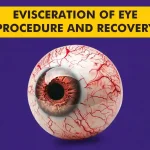|
Key Takeaways:
|
Micro Incision Cataract Surgery (MICS) is a modern cataract operation done through a very small cut, about 1.8–2.2 mm. Many people ask what MICS cataract surgery is, how it differs from standard phaco, and what the MICS surgery full form means in practice.
This guide explains the steps, benefits, who it suits, recovery time, and a quick overview of MICS cataract surgery costs in simple terms.
What Is MICS Cataract Surgery?
MICS surgery’s full form is Micro Incision Cataract Surgery. It is a modern method for removing a cataract through a very small cut (often about 1.8–2.2 mm). This is sometimes called MICS eye surgery or MICS cataract surgery.
In simple terms, the surgeon makes a tiny opening, breaks up the cloudy lens, removes it, and places a clear intra-ocular lens (IOL) during the cataract surgery procedure.
Because the cut is so small, it usually seals by itself, requiring no stitches, and can result in less irritation, quicker healing, and faster vision recovery compared to larger-incision methods.
Who Needs Micro Incision Cataract Surgery?
MICS cataract surgery is a good fit if you and your surgeon prefer a small-cut, quick-recovery option. Your doctor will confirm this after eye scans and an exam.
- People with symptomatic cataracts: Vision is blurry, glary, or night driving is difficult, and glasses no longer help.
- Those who prefer minimally invasive care: A tiny cut and usually no stitches.
- Busy schedules: Many patients return to their routine desk work sooner (your doctor will guide exact timelines).
- Astigmatism correction: Can be paired with toric IOLs for more precise vision.
- Fewer glasses goal: Can be combined with premium IOLs (e.g., multifocal/EDOF) when suitable.
- Other eye conditions: May still be possible in eyes with diabetes or glaucoma, but the surgeon decides if MICS is right alone or with additional procedures.
How Is MICS Surgery Performed?
Below are the pre-procedure, surgery, post-procedure and recovery steps for Micro Incision Cataract Surgery (MICS):
Pre-Procedure
Your surgeon first performs a comprehensive eye exam and takes measurements to determine the lens power (IOL) and the optimal technique. You’ll review your medications (some may be paused), allergies, and health issues, and you’ll receive simple instructions for the day of surgery. On the day, the pupil is dilated, and the eye is cleaned. Most people receive numbing drops or local anaesthesia, so you’re comfortable but awake. MICS means a very small cut. Many centers use about 1.8–2.2 mm incisions (coaxial micro-incision) because they self-seal and cause minimal surgically-induced astigmatism; some MICS variants go below 1.8 mm. Your surgeon will choose what’s safest for your eye.
During Surgery
- Tiny incision: A clear-corneal cut is made, ~2 mm (or smaller with some MICS systems). Small side-ports may also be created.
- Ultrasound removal (phaco): An ultrasonic probe breaks the cloudy lens into tiny pieces and gently suctions them out.
- Lens placement (IOL): A foldable artificial lens is inserted through the same micro-incision and positioned inside the eye.
- Self-sealing wound: Since the cut is small, it usually doesn’t need stitches, which supports faster comfort and recovery.
That’s the core micro incision cataract surgery flow, small cuts, ultrasound lens removal, and a foldable IOL placed through the same opening.
Post-Procedure and Recovery
- Right after: You rest briefly in recovery; the team checks your eye before you go home. Many surgeons place a protective shield for the ride home and at night for a few days.
- Drops and care: You’ll use antibiotic/anti-inflammatory drops for several weeks; many services advise around 4 weeks. Avoid rubbing the eye.
- Activity: Take it easy for the first 2–3 days; avoid heavy lifting, dusty/smoky places, and swimming for a short period (your surgeon will specify).
- Follow-ups: Checks are day 1–2, about a week, and around a month to confirm healing and update glasses if needed.
|
Fact: The tiny incision starts sealing in the first 24 hours; the rest of the surface heals steadily over the next days and weeks. Vision improves quickly, but full stabilization can take a few weeks. |
How Is MICS Different From Conventional Phacoemulsification?
Both MICS and phacoemulsification are safe and effective. MICS uses an even smaller incision, which may speed recovery and reduce induced astigmatism. Conventional phaco is a tried-and-true method, widely available, and it works with the widest range of lenses.
The “better” choice is the one your eye and your surgeon decide fits your lens hardness, cornea, IOL plan, and budget.
|
Aspect |
Micro Incision Cataract Surgery (MICS) |
Phacoemulsification |
|
Incision size |
Very small cut, ~1.8–2.2 mm; usually self-sealing, stitches rarely needed. |
Small cut, 2.2–3.0 mm; also self-sealing in most cases. |
|
Tissue impact |
Smaller entry → usually less tissue disturbance and less induced astigmatism. |
Slightly larger entry → a bit more induced astigmatism in some eyes. |
|
Ultrasound & fluid |
Designed to work efficiently with micro-tips and lower fluidics; can feel gentler. |
Standard tips and settings; highly effective and widely practiced. |
|
IOL compatibility |
Needs ultra-thin, highly foldable IOLs that pass through micro incisions. |
Accepts a broader range of IOLs (monofocal, toric, multifocal, EDOF). |
|
Recovery |
Quicker comfort and faster visual recovery. |
Recovery is quick for most, sometimes a touch slower than MICS. |
|
Astigmatism control |
Micro cuts generally minimize surgically induced astigmatism. |
Good control, but the slightly larger cut may induce a bit more change. |
|
Dense (“hard”) cataracts |
Still effective; in very dense lenses, surgeons enlarge slightly for safety. |
Very effective; some surgeons prefer a standard size for very dense lenses. |
|
Availability/learning curve |
Needs specific instruments and surgeon experience; not at every center. |
Widely available; standard across most cataract services. |
|
Cost |
Can be slightly higher (micro instruments, specific IOLs). |
Standard pricing; premium IOLs add cost if chosen. |
|
Best for |
Patients wanting tiny incisions, fast recovery, careful astigmatism control. |
Patients wanting proven, widely available surgery with broad IOL choices. |
Advantages And Disadvantages of Micro Incision Cataract Surgery (MICS)
Micro Incision Cataract Surgery (MICS) uses a very small cut (about 1.8–2.2 mm). That can help with comfort and recovery, but it isn’t perfect for every eye.
Here are the simple advantages and disadvantages of micro incision cataract surgery (mics):
|
Aspect |
Advantages of MICS (micro incision cataract surgery) |
Possible disadvantages / when not ideal |
|
Incision size & healing |
Very small cut; usually self-sealing, fewer or no stitches, faster surface healing. |
In rare cases, the cut may need enlargement for safety. |
|
Recovery & return to routine |
Many patients see quicker comfort and visual recovery; back to light work sooner (doctor-guided). |
Heavy exercise and swimming still need to wait; timelines vary by eye health. |
|
Induced astigmatism |
Smaller cuts generally mean less surgically induced astigmatism. |
If the incision must be enlarged (dense cataract), astigmatism control be similar to standard phaco. |
|
Comfort |
Less tissue disturbance → less irritation after surgery. |
Dry eye or light sensitivity can still happen for a short time. |
|
Visual outcomes & IOL options |
Works with toric and many premium IOLs(multifocal/EDOF) for reduced glasses use when suitable. |
Ultra-thin IOLs and special tools may be needed; not every premium IOL suits every cornea/eye. |
|
Dense (“hard”) cataracts |
Can be done with careful technique; some surgeons still prefer MICS. |
Very hard lenses may need a slightly larger cut or a different method. |
|
Other eye conditions |
Can be combined with astigmatism correction; usable in many diabetics/glaucoma eyes (surgeon to decide). |
Coexisting disease may change the plan, lens choice, or recovery pace. |
|
Availability & cost |
Modern, precise technique. |
Not available everywhere; MICS cataract surgery cost can be slightly higher (special instruments/IOLs). |
|
Surgeon experience |
In expert hands, results are excellent. |
Steeper learning curve; outcomes depend on surgeon and center experience. |
|
Risks |
Similar low complication rates to standard phaco; benefits from tiny cuts. |
No surgery is risk-free, infection, swelling, pressure changes, or PCO can still occur (rare). |
Conclusion
Micro Incision Cataract Surgery (MICS) uses a very small cut (about 1.8–2.2 mm) to remove the cataract and place a foldable lens. For many people, this means less irritation, quick comfort, and steady vision recovery. It isn’t the only good option; traditional phaco is also safe and effective, so the best choice depends on your eye health, the hardness of your cataract, your cornea, and your surgeon’s advice.
FAQs
What is MICS cataract surgery?
MICS cataract surgery is Micro Incision Cataract Surgery, a small-cut method (about 1.8–2.2 mm) to remove the cloudy lens and insert a clear intra-ocular lens (IOL).
What is the MICS surgery full form?
The MICS surgery full form is Micro Incision Cataract Surgery.
How does MICS cataract surgery differ from traditional cataract surgery?
MICS cataract surgery differs from traditional cataract surgery by using a smaller incision that self-seals, reduces induced astigmatism, and can speed comfort and recovery.
What are the benefits of MICS cataract surgery?
The benefits of MICS cataract surgery are tiny incisions, usually no stitches, quicker comfort, stable vision sooner, and compatibility with toric/multifocal/EDOF lenses when suitable.
Who is an ideal candidate for MICS cataract surgery?
An ideal candidate for MICS cataract surgery is someone with a symptomatic cataract, a cornea suitable for a micro-incision, and clear goals for vision (e.g., reduce glasses), as confirmed by the surgeon’s exam and scans.
Is MICS cataract surgery safe?
Yes, MICS cataract surgery is very safe when done by an experienced surgeon, with risks similar to standard phaco (infection, swelling, pressure changes, or PCO are uncommon).
What is the recovery time for MICS cataract surgery?
The recovery time for MICS cataract surgery is often quick: many people feel better within 1–3 days, with vision settling over 1–4 weeks as the eye heals.
Will I need to wear glasses after MICS cataract surgery?
You may still need glasses for some tasks; choosing toric, multifocal, or EDOF IOLs can reduce glasses use, but suitability depends on your eye and lifestyle.
Potential complications of MICS cataract surgery include infection, inflammation, corneal swelling, pressure spikes, and later posterior capsule opacification (PCO), most are treatable and uncommon.





